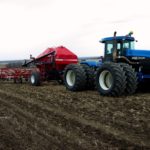
There are many ways to view — and treat — soil
Healthy soil is a precious resource and we need to think more about that as we plan for our future

Listen to your crops — the plants are talking to each other
They’re also ‘foraging’ for nutrients, deciding where to put their roots, and calling for help when under attack
Reading Time: 3 minutes You might think it’s crazy — but plants talk to each other and act in ways that are similar to animals and humans. “Step away from the idea of plants as factories and start to think of plants as individuals,” biological sciences professor JC Cahill told attendees at the Western Canadian Soil Health and Grazing […] Read more
Proceed with caution when it comes to micronutrients, says agronomist
It’s not hard to spend thousands of dollars on micronutrients that aren’t needed or produce little benefit, says Ross McKenzie

There are (giga) tonnes of benefits from properly grazed grasslands
Light to moderate grazing can enhance soil carbon levels by as much as 40 per cent — if the land is managed properly

Broadcast seeding: A last-resort option may gain traction this season
It’s far from ideal, but broadcasting may be the only choice for some this seeding season

It’s not business as usual when it comes to fertilizing this year
Unharvested crops mean there’s more nutrients in the soil and if you have to broadcast, there’s a chance to top up the nutrient bank

How to build a soil-health bank account
This organic production technique offers a big-picture view of nutrient management — and a ‘tough love’ approach to soil fertility

COVER CROPS: The potential is huge, but so is the learning curve
Those looking for a one-size-fits-all solution will be disappointed
New version of soil viewer launched

When it comes to healthy soil, you want to lump it
Soil aggregation is critical — in several different ways — to growing healthy crops

